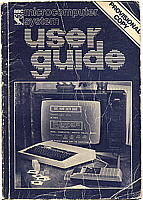 |
| The BBC Microcomputer
user guide
Provisional copy |
| John Coll / British Broadcasting Corporation |
 |
| Introduction |
| Getting going |
| Giving the computer instructions |
| Variables |
| Computer programs |
| Recording programs on cassette |
| BASIC keywords |
| VDU drivers |
| Printer control |
| Changing filing systems |
| User defined keys |
| Cassette files |
| Machine operating systems |
| Minimum abbreviations |
| Error messages |
|
|
|
 |
 |
 |
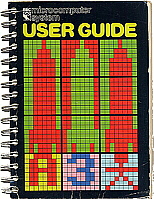 |
| BBC microcomputer
system USER GUIDE |
| John Coll / David Allen / British
Broadcasting Corporation |
 |
| Getting Going |
PROCEDURES |
BASIC keywords |
| Commands |
FUNCTIONS |
VDU drivers |
| An introduction to variables |
GOSUB |
Cassette files |
| Writing a simple program |
GOTO, ON GOTO and ON GOSUB |
Changing filing systems |
| Recording programs on cassette |
Yet more on variables - Arrays |
Merging BASIC programs |
| Some sample programs |
READ, DATA and RESTORE |
Using printers |
| AUTO, DELETE, REM and RENUMBER |
Integer handling |
Indirection operators |
| Introducing graphics |
String handling |
HIMEM, LOMEM, TOP and PAGE |
| More on variables, ASCII, CHR$,
ASC |
Programming the function keys |
Operating system statements |
| PRINT and formatting. Cursor
control |
Operator precedence |
FX calls and OSBYTE calls |
| INPUT |
Error handling |
Assembly language |
| GET and INKEY |
Use of teletext mode (MODE 7) |
Analogue and user ports |
| TIME and Random numbers |
Advanced graphics |
Expanding the system |
| REPEAT . . . UNTIL, TRUE and
FALSE |
Sound |
Error messages |
| FOR . . . NEXT |
File Handling |
Minimum abbreviations |
| IF . . . THEN . . . ELSE |
Speeding up and saving memory |
Appendix |
|
|
|
 |
 |
 |
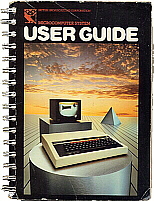 |
| British Broadcasting
Corporation Microcomputer System USER
GUIDE |
| John Coll / David Allen / Acorn Computers
Limited |
 |
| Getting Started |
Functions |
Cassette files |
| Commands |
GOSUB |
Changing filing systems |
| An introduction to variables |
ON GOTO, ON GOSUB |
Merge BASIC programs |
| A simple program |
Even more on variables |
Using printers |
| Recording programs on cassette |
READ, DATA, RESTORE |
Indirection operators |
| Sample programs |
Integer handling |
HIMEM, LOMEM, TOP and PAGE |
| AUTO, DELETE, REM, RENUMBER |
String handling |
Operating system statements |
| Introducing graphics |
Programming user defined keys |
The shadow screen |
| More on variables |
Operator priority |
The operating system |
| Print and formatting and cursor
control |
Error handling |
Assembly language |
| Input |
Teletext codes and MODE 7 |
Operating system calls |
| GET, INKEY |
Advanced graphics |
Analogue input |
| TIME, RND |
Sound |
Error messages |
| REPEAT . . . UNTIL, TRUE, FALSE
|
File handling |
Minimum abreviations |
| FOR . . . NEXT |
Speeding up and saving memory |
BASIC II |
| IF . . . THEN .
. . ELSE |
BASIC keywords |
Appendices |
| Procedures |
VDU drivers |
|
|
|
|
 |
 |
 |
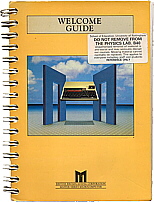 |
| The BBC Microcomputer
System Master Series WELCOME GUIDE |
| Acorn Computers Limited / British
Broadcasting Corporation |
 |
| Foreword |
| Introduction |
| Getting Started |
| The BASIC Language |
| Introducing VIEW |
| Introducing ViewSheet |
| Filing Systems |
| The Editor |
| The Terminal Emulator |
| Expanding the System |
| Appendices |
| Index |
|
|
|
 |
 |
 |
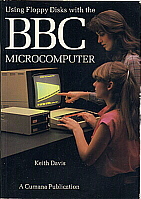 |
| Using Floppy Disks
with the BBC MICROCOMPUTER |
| Keith Davis / Cumana |
 |
| Introduction to
Data Storage |
Random Text Files |
| The Floppy Drive |
Catalogue Address Byte Layout |
| Setting up |
DFS Error Messages |
| Switching on |
Technical Notes for the BBC
Micro |
| Other Devices |
The Switchable Drives |
| Filespecs |
Half Height Drives |
| Using the Filing
System and DFS Commands |
Disk Formatters for the BBC |
| The DFS Commands |
Programming with the DFS |
|
|
|
 |
 |
 |
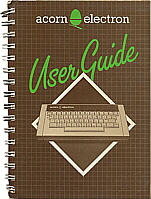 |
| acorn electron User
Guide |
| Acorn Computers Limited |
 |
| What is a computer? |
Variables and expressions |
VDU codes |
| Getting started |
Operator precedence |
Making sounds |
| Using a cassette recorder |
Arrays |
Address pointers, indirection
operators |
| The Introductory Cassette |
READ . . . DATA . . . RESTORE |
User-programmable keys |
| How to use the keyboard |
Print formatting and INPUT |
BASIC keywords |
| Introducing commands and programs |
Conditional and loop instructions |
Cassette file handling |
| Editing programs |
Procedures |
Error handling |
| Trying out some programs |
GOTO and GOSUB |
Merging BASIC programs |
| Recording programs on cassette |
Functions |
Assembly Language |
| The FUNC key and BASIC keywords |
Graphics |
Appendices |
|
|
|
 |
 |
 |
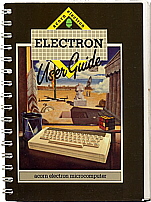 |
| Acorn Electron User
Guide |
| Acorn Computers Limited |
 |
| What is a computer? |
Variables and expressions |
VDU codes |
| Getting started |
Operator precedence |
Making sounds |
| Using a cassette recorder |
Arrays |
Address pointers, indirection
operators |
| The Introductory Cassette |
READ . . . DATA . . . RESTORE |
User-programmable keys |
| How to use the keyboard |
Print formatting and INPUT |
BASIC keywords |
| Introducing commands and programs |
Conditional and loop instructions |
Cassette file handling |
| Editing programs |
Procedures |
Error handling |
| Trying out some programs |
GOTO and GOSUB |
Merging BASIC programs |
| Recording programs on cassette |
Functions |
Assembly Language |
| The FUNC key and BASIC keywords |
Graphics |
Appendices |
|
|
|
 |
 |
 |
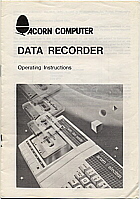 |
| Acorn Computer Data
Recorder Operating Instructions |
| Acorn Computers Limited |
 |
| Location and Function of Controls |
| The Mains Adaptor |
| Precautions |
| Mains Operation |
| Battery Operation |
| Interface between Data Recorder and
Microcomputer |
| Cassette Insertion |
| Motor Control |
| Saving Programs on a Cassette from
an Acorn Electron or BBC Microcomputer |
| Loading Programs into a Computer from
the Data Recorder |
| Cue (F.Fwd) and Review (Rewind) |
| Use of Tape Counter |
| Storing the Cassette |
| Maintenance of the Cassette Mechanism |
| Demagnetizing the Head |
| Cleaning the Cabinet |
| Protection against Accidental Erasure |
| Preparing the Unit for Normal Audio
Use |
| Product Specification |
|
|
 |
 |
 |
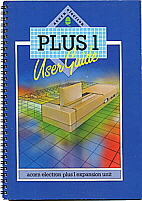 |
| Acorn Electron Plus
1 User Guide |
| Acorn Computers Limited |
 |
| Introduction |
| Setting up |
| The analogue interface |
| Using a printer |
| Using cartridges |
| Dealing with problems |
| Appendix |
|
|
 |
 |
 |
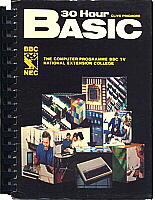 |
| 30 Hour BASIC |
| Clive Prigmore (Orpington College
of Further Education) |
| The Computer Programme BBC TV |
| National Extension College |
 |
| How to use this course |
| Simple statements and commands |
| Making decisions |
| Strings |
| Lists |
| An end to strings and PRINT |
| Mainly about dice and games |
| Handling numbers |
| An introduction to data processing |
| File handling |
|
|
 |
 |
 |
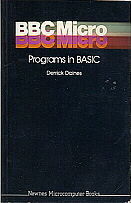 |
| BBC MICRO Programs
in BASIC |
| Derrick Daines / Newnes |
 |
| Introduction |
Greed |
Anagram |
| Quickdraw and 100
metres sprint |
Pakistani pool |
Simon |
| Market day |
Slide |
Readnum |
| Pattern maker |
Get that bird! |
Snap |
| Time bomb |
Torpedo run |
Pontoon |
| Bicycle wheel |
Series |
Scribble |
| Plates |
Word squares |
Cape Horn |
| Tuttle |
Derby |
Reverse Polish calculator |
| Score |
Bingo |
Moses |
|
|
|
 |
 |
 |
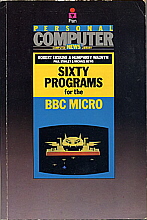 |
| Sixty Programs for
the BBC Micro |
| Robert Erskine & Humphrey Walwyn
with Paul Stanley & Michael Bews
/ Personal Computer News |
 |
| Motocross |
Buzzy Bee |
Minelay |
Giant Rats |
| Hangman |
Snap |
Horse Race |
Dog Fight |
| Championship Boxing |
Russian Roulette |
Drag Racer |
Cheshire Cat |
| Galaxian |
Energy Field |
Moonlander |
Mushroom Invasion |
| Newmarket |
Picture Pairs |
Flying Bomb |
Heli-Bomber |
| Ambush |
Space Traffic |
Bulls and Cows |
OXO |
| Fall Guy |
Flying Geese |
Chomper 1 and 2 |
Countabout |
| Exocet |
Division One |
Asset Stripper |
Evolution 1 |
| Wordgram |
Morse Tutor |
Wordsum |
Evolution 2 |
| Tug of War |
Roots |
Xmas Eve |
Evolution 3 |
| Sheepdog Trials |
Grand Prix |
Anagrammatic |
Swordsman |
| Duel |
Bricklayer |
Top Trainer |
Omnicalendar |
| Pay Packets |
Fives |
Postman |
Biorythms |
| Dam Busters |
Critical Path Analysis |
Invaders |
Dam Eaters |
| Holiday Expenses |
Numbers |
Tanx |
Radiopower |
|
|
|
 |
 |
 |
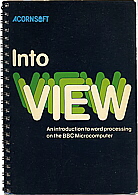 |
| Into VIEW An
introduction to word processing on the
BBC Microcomputer |
| Acornsoft |
 |
| What is word processing? |
Names of files |
Limited searching
and changing |
| BASIC |
General procedure
for printing |
Finding and changing
phrases |
| Switching on |
PRINT |
Protecting text |
| The command mode
display |
SHEETS |
The use of TABs |
| Text mode |
Editing procedures |
The left margin |
| The text mode display |
SCREEN |
COUNT |
| Screen and page |
Highlights |
FORMAT |
| Typing text |
Resetting highlight
codes |
Editing BASIC programs |
| The ruler |
Printing from cassette |
The EDIT method |
| Do-it-yourself rulers |
Moving and changing
text |
Finishing |
| Further experiments
with rulers |
Book and report
work |
The Second Processor |
| Tabbing after typing |
Number registers |
Mode switches |
| TAB characters |
Modified macros |
*FX commands |
| Text outside the
ruler |
Macros for mailshots |
Colours |
| Tables and formatting |
Automatic layout |
List of commands |
| Disc systems |
REPLACE |
|
| Cassette systems |
SEARCH |
|
|
|
|
 |
 |
 |
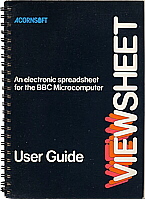 |
| Viewsheet User Guide
An electronic
spreadsheet for the BBC Microcomputer
|
| Acornsoft |
 |
| Part One Introducing
ViewSheet |
Part Two ViewSheet facilities |
 |
 |
| What is a spreadsheet? |
Entering ViewSheet |
| Hands on ViewSheet |
Commands used in command mode |
| Ranges and replication |
Sheet mode |
| Windows and headings |
Columns and rows |
| Printing out |
Values and labels |
| Managing sheets |
The contents of slots |
| Using discs and
cassettes |
Recalculation |
| Displays with bar
charts |
Replication |
| Conditions and lookup |
Value formats |
| |
Screen windows |
| |
Printing out |
| |
Using discs within the sheet |
| |
RETURN - and what happens when
you press it |
| |
Additional notes |
|
|
|
 |
 |
 |
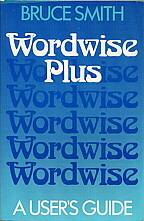 |
| Wordwise Plus A User's
Guide |
| Bruce Smith / Collins |
 |
| What's It All About |
Sideways RAM |
| Introducing Edit
Mode |
Segments |
| Wisewords |
Text Processing |
| Markers and Searching |
Structures |
| Formatting Text |
File Processing |
| Printer Control |
And Finally . . . |
| Headers and Footers |
Segment Programs |
| Final Command |
BBC B+ Fitting |
| A Key Function |
Epson Compatible Printer Codes |
| Wordwise Utilities |
ASCII Codes |
| Wordwise Programs |
Function Keystrips |
| Hints and Tips |
|
|
|
|
 |
 |
 |
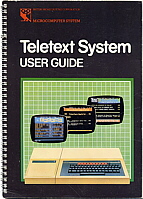 |
| Teletext System USER
GUIDE |
| Acorn Computers Limited |
 |
| About this User Guide |
| What is Teletext? |
| What does the BBC Microcomputer
Teletext System do? |
| Getting started |
| Using the system in Terminal
mode |
| Using the system in Telesoft
mode |
| Using the Teletext system at
assembly level |
| Changing the filing system |
| Technical information |
| Figures |
| Tables |
| Appendices |
|
|
|
 |
 |
 |
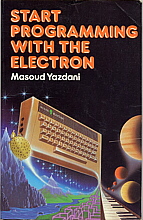 |
| Start Programming
With The Electron |
| Masoud Yazdani / Addison-Wesley Publishing
Company |
 |
| Introducing the
Acorn Electron |
Turtle Graphics |
| Writing a Song |
Maze Solver |
| Talking to Turtle |
Greeter Program |
| Playing with Numbers |
Rivergame Program |
| Structured Problem
Solving |
|
| Helping Tutle in
a Maze |
|
| Input and Output |
|
| Collections of objects |
|
| Have a Chat with
your Micro |
|
| Sounding out your
Electron |
|
| Pretty Pictures |
|
| Computer Games |
|
|
|
|
 |
 |
 |
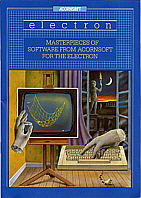 |
| Masterpieces of Software
from Acornsoft for the Electron
(Brochure) |
| Acornsoft |
 |
| Software Catalogue: |
| Creative Graphics |
S-Pascal |
Arcadians |
| Graphs and Charts |
Turtle Graphics |
Free Fall |
| Picture Maker |
Starship Command |
Theatre Quiz |
| Personal Money Management |
Monsters |
Crime & Detection Quiz |
| Desk Diary |
Chess |
Music Quiz |
| Tree of Knowledge |
Draughts & Reversi |
History Quiz |
| Peeko-Computer |
Snapper |
Science Fiction Quiz |
| Business Games |
Meteors |
Royal Quiz |
| Lisp |
Hopper |
' . .I Do' |
| Forth |
Sphinx Adventure |
The Dating Game |
|
 |
| Penguin Acorn Computer
Library: |
| The Acorn Guide to the Electron |
| Games and other programs for the Acorn
Electron |
|
|
 |
 |
 |
 |
 |
 |
 |
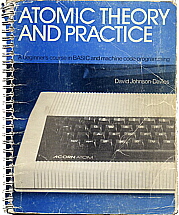 |
| ATOMIC THEORY AND
PRACTICE |
| A beginner's course in BASIC and machine
code programming |
| David Johnson-Davies / Acorn Computer
Ltd 1981 |
 |
| Introduction |
 |
| BASIC PROGRAMMING |
 |
| Start Here |
| Calculating in BASIC |
| Planning a Program |
| Writing a BASIC Program |
| Loops |
| Subroutines |
| Arrays and Vectors |
| Strings |
| Reading and Writing Data |
| More Space and More Speed |
| Advanced Graphics |
| What to do if Baffled |
 |
| ASSEMBLER PROGRAMMING |
 |
| Assembler Programming |
| Jumps, Branches,
and Loops |
| Logical Operations,
Shifts, and Rotates |
| Addressing Modes
and Registers |
| Machine-Code in
BASIC |
|
|
|
| REFERENCE SECTION |
 |
| ATOM Operating System |
| Cassette Operating System |
| BASIC Statements, Functions,
and Commands |
| BASIC Characters and Operators |
| Extending the ATOM |
| Mnemonic Assembler |
| Assembler Mnemonics |
| Operating System Routines
and Addresses |
| Syntax Definition |
| Error Codes |
|
|
|
|
 |
 |
 |
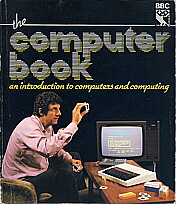 |
| the computer book |
| Robin Bradbeer, Peter De Bono, Peter
Laurie / BBC |
| an introduction to computers and computing |
 |
| Introduction |
| Setting the scene |
| Problems and computers |
| The hardware and the software |
| Understanding programming |
| You and your microcomputer |
| The limits to growth? |
| Glossary |
| |
| This book is published in conjunction
with the BBC television series The
Computer Programme first transmitted
on BBC-2 from January 1982 and produced
by Paul Kriwaczek |
|
|
 |
 |
 |
| |